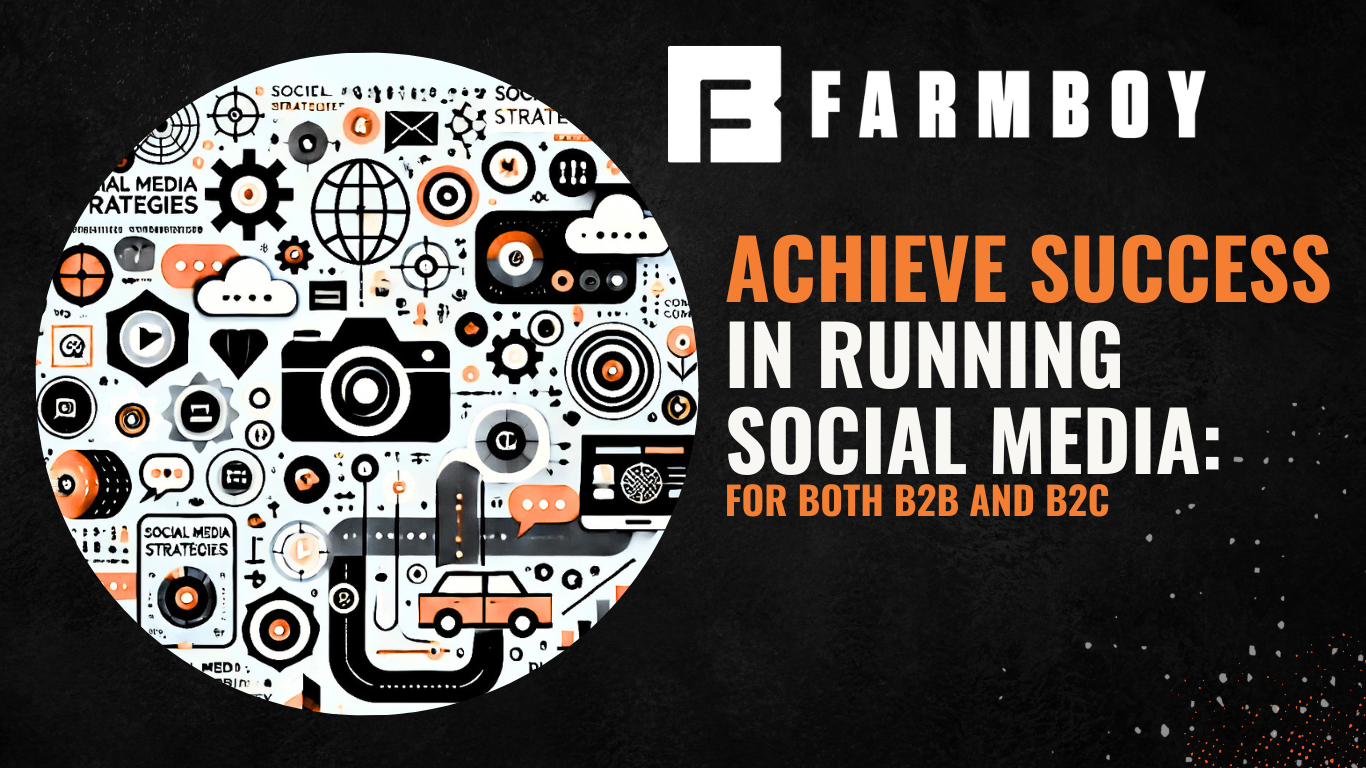Key Differences and the Power of Community Building
Running successful social media accounts for businesses isn’t one-size-fits-all. Whether your company focuses on Business-to-Business (B2B) or Business-to-Consumer (B2C), your approach to social media must be carefully crafted to resonate with your specific audience. While both B2B and B2C social media strategies aim to build engagement and drive conversions, the way you approach these goals can differ significantly. Let’s break down the differences and discuss why building a community is crucial for both.
Related Blog: “What’s Behind An Award Winning Brand – A Look Inside The Brand Guide“
Understanding the Differences: B2B vs. B2C Social Media
1. Audience Intent & Motivation:
- B2B: In B2B marketing, your audience is primarily businesses or professionals making informed, long-term decisions. They look for value, expertise, and reliability. The focus is often on education, industry insights, and problem-solving. For this audience, social media content needs to highlight your company’s thought leadership, showcase results, and provide valuable resources.
- B2C: On the other hand, B2C social media is more about emotion-driven decision-making. Consumers want engaging, entertaining, and visually appealing content. They often look for quick wins—like deals, experiences, and brand personality. In this space, your brand needs to build trust quickly and maintain constant interaction to stay top of mind.
2. Content Types:
- B2B: Content is typically more educational and data-driven. Think whitepapers, case studies, in-depth blog posts, and webinars. Your social media should revolve around sharing insights and expertise, often in a longer form. LinkedIn, for instance, is a goldmine for B2B as it allows you to network, engage with decision-makers, and provide professional insights.
- B2C: For B2C, shorter, snappier content reigns supreme. The goal is to capture attention quickly with high-impact visuals, relatable stories, and emotional connections. Think Instagram reels, TikTok challenges, and user-generated content. You want to build a relatable brand voice and offer content that feels like a conversation, not a transaction.
3. Sales Cycle Length:
- B2B: The B2B sales cycle is typically longer, with multiple decision-makers involved. This means your social media strategy should be focused on nurturing leads over time with relevant content that speaks to various pain points. Consistency is key here, as you’re building trust for a high-stakes decision.
- B2C: The B2C sales cycle is often much shorter. Consumers are frequently making impulse buys or quick decisions, so your social media needs to provide a direct path to purchase. Highlighting deals, showcasing customer reviews, and using influencer marketing can speed up this process.
Why Building a Community Is Crucial for Both
No matter which market you serve, building a community on social media is essential for long-term success. Social media isn’t just about pushing out content—it’s about creating a two-way street where engagement is valued, and relationships are built.
Related Blog: “The Power of Customer Loyalty: Why Prioritizing Existing Customers Is As Important As Chasing New Ones“
1. Establishing Trust:
- In both B2B and B2C, trust is the cornerstone of successful marketing. For B2B, this trust comes from providing consistent value through thought leadership and expertise. For B2C, trust is earned by being authentic, responsive, and creating a brand that resonates emotionally with consumers.
2. Fostering Loyalty:
- Communities build loyalty. A B2B business that fosters a strong community will see clients coming back for more, recommending them to colleagues, and referring to them as thought leaders in the industry. In B2C, loyalty often takes the form of customers who share your content, tell their friends about your products, and engage with your brand on multiple platforms.
3. Generating User-Generated Content:
- A thriving social media community will also generate organic content. For B2C brands, this might mean customers sharing photos of themselves using your product, offering free word-of-mouth marketing. For B2B brands, this could look like clients sharing success stories, case studies, or positive feedback that can be used to attract future customers.
4. Enhancing Customer Experience:
- Engaging with your community allows you to gain invaluable insights into what your audience needs and values. Both B2B and B2C businesses can use this feedback to refine their products, improve customer service, and ultimately enhance the customer experience.
Related Blog: “Why Mobile-Friendly Websites Are Crucial for Contractors“
Tips for Building a Community in B2B and B2C Social Media:
Be Consistent: Posting regularly shows that you’re active, reliable, and engaged.
Be Authentic: Whether you’re a B2B or B2C brand, authenticity resonates. Share real stories, behind-the-scenes moments, and relatable content that humanizes your brand.
Engage, Don’t Just Broadcast: Respond to comments, ask questions, and foster conversations. Social media is about creating dialogue, not monologue.
Leverage User-Generated Content: Encourage customers to share their stories and experiences with your brand. Showcase these stories to build trust and credibility.
Focus on Value: Provide your audience with content that is valuable to them. For B2B, this might mean expert insights. For B2C, it might be entertaining or useful tips.
Celebrate Your Community: Whether you’re recognizing a loyal customer or a top-tier client, publicly acknowledging your community can go a long way in fostering loyalty and positive relationships.
Conclusion: Telling Your Brand’s Story the Right Way
Success on social media—whether in B2B or B2C—depends on telling your story in a way that resonates with your audience and builds lasting relationships. At Farmboy, we specialize in crafting custom social media strategies that not only engage followers but also build thriving communities. Our award-winning strategies ensure your brand is positioned for success, no matter your industry. Let’s tell your story, build your community, and drive results that matter.



Leave a Reply
You must be logged in to post a comment.